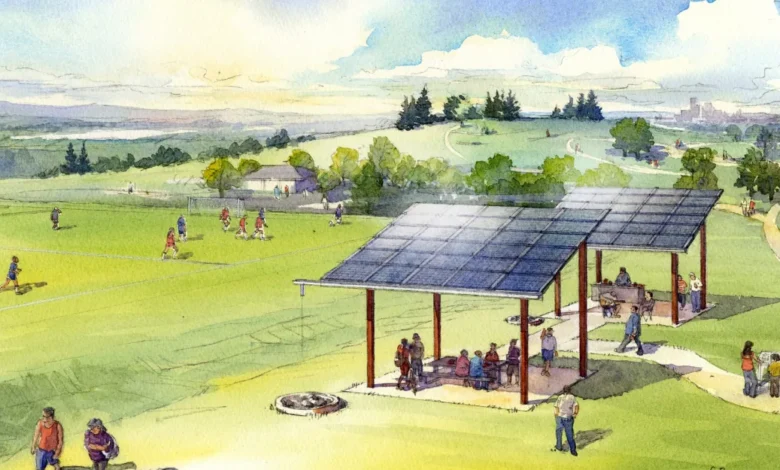Solar Providers’ Role in Community Solar & Shared Systems

Community solar and shared solar systems are transforming the way households and businesses access renewable energy. Instead of relying solely on individual rooftop installations, these systems allow multiple participants to benefit from a single solar array, reducing energy costs while promoting environmental sustainability. We will explore the critical role that solar providers play in implementing and managing these systems, ensuring that communities can access clean energy efficiently. By facilitating planning, installation, and maintenance, solar providers bridge the gap between technology and public adoption. Their contributions extend beyond technical work; they also engage in community education, financial guidance, and long-term system support, creating opportunities for broader solar access across diverse neighborhoods.
The Role of Solar Providers in Community Solar & Shared Systems
- Designing Systems for Maximum Accessibility
Solar providers are responsible for designing community solar and shared systems that meet the specific needs of the participants. Unlike individual rooftop panels, shared systems require careful planning to allocate energy output fairly and ensure equitable billing. Providers assess local sunlight patterns, available space, and energy consumption trends to determine system size and layout. In urban or suburban areas where rooftop space is limited, ground-mounted arrays may be strategically located in community centers, schools, or commercial lots.
By creating efficient designs, North Valley Solar Power and other solar providers ensure that every participant receives the benefits promised, fostering trust and long-term engagement. Their planning also accounts for potential growth in energy demand, allowing systems to expand without major disruptions.
- Navigating Regulatory and Financial Frameworks
Implementing community solar projects involves navigating complex regulatory requirements and financial models. Solar providers guide participants through the process of obtaining permits, navigating zoning restrictions, and understanding utility agreements to ensure compliance with local laws. They also help manage billing structures, tax incentives, and rebates that make shared solar a financially attractive option. For many households, understanding how credits are allocated or how virtual net metering works can be overwhelming.
Providers simplify these processes, translating policy and utility rules into clear, actionable plans. By combining technical knowledge with administrative support, they remove barriers that often prevent communities from adopting solar energy. Financial transparency is essential, as it encourages participation while maintaining the integrity of the shared system.
- Community Engagement and Education
Solar providers often act as educators, helping communities understand the benefits of shared solar systems. Through workshops, informational sessions, and personalized consultations, they explain how energy savings are achieved, how systems are maintained, and how participants can monitor their usage. Effective communication ensures that residents are aware of what to expect and how to optimize their participation.
Providers may also highlight environmental benefits, such as reduced carbon emissions and improvements in local air quality, which strengthen community buy-in. Education efforts extend to helping participants troubleshoot minor issues, interpret energy bills, and plan for future energy needs. By fostering informed communities, providers contribute to more successful and sustainable shared solar projects.
- Installation and Technical Maintenance
A core responsibility of solar providers is managing the installation and ongoing maintenance of community solar systems. Coordinating a project that serves multiple users requires precision, from panel placement to wiring and grid integration. Providers ensure that equipment meets safety standards and operates efficiently under varying conditions. Regular maintenance checks, performance monitoring, and troubleshooting prevent disruptions in service and maintain energy output at optimal levels. By handling these technical aspects, providers allow participants to enjoy solar benefits without the burden of complex system management. Their work ensures reliability, a crucial factor in building community confidence in shared energy initiatives.
- Promoting Energy Equity
Shared solar systems offer an opportunity to expand access to renewable energy for households that cannot install panels on their property. Solar providers play a vital role in promoting energy equity by designing subscription models that enable renters, low-income families, and residents of multifamily housing to participate. By offering flexible payment structures and community-focused programs, providers make solar energy more inclusive. This approach not only benefits individual participants but also advances broader sustainability goals.
Providers often collaborate with local governments and non-profits to identify communities that can gain the most from shared solar programs, ensuring that environmental benefits are distributed fairly. Their involvement helps reduce disparities in energy access while encouraging community-wide adoption of renewable solutions.
- Monitoring and Performance Reporting
Monitoring energy production and usage is essential for the success of community solar systems. Providers implement tracking systems that collect data on electricity generation, participant consumption, and system efficiency. Regular performance reports help participants understand their contribution to energy savings and environmental impact. These reports also allow providers to identify issues before they become significant problems, ensuring uninterrupted service. Transparency in monitoring builds trust among community members and validates the financial and environmental benefits of the system. Providers may offer online dashboards or mobile apps for easy access to real-time data, enabling participants to engage actively with the system and make informed energy choices.
Solar providers play a crucial role in the success of community solar and shared systems, serving as designers, educators, technical managers, and advocates for energy equity. Their work enables multiple households and businesses to access renewable energy efficiently and fairly, while also promoting environmental sustainability. From planning and installation to monitoring and long-term support, providers ensure that community systems operate smoothly and deliver tangible benefits.
By simplifying complex processes and fostering informed participation, they make solar energy accessible to a wider audience. Engaging with a solar provider not only enhances energy independence but also contributes to a greener, more sustainable future for communities across regions like Tracy, California and beyond. Through their guidance, shared solar systems can thrive as a practical and inclusive solution for modern energy challenges.







